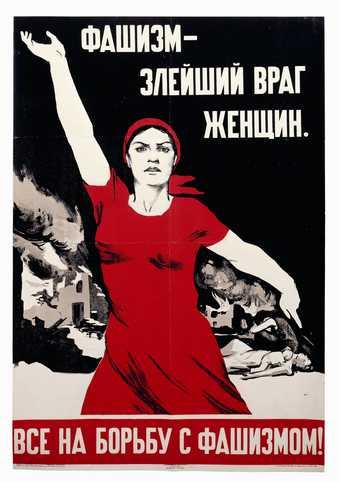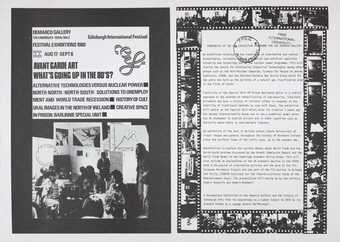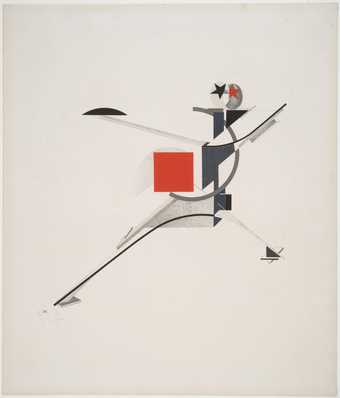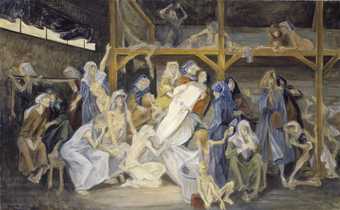
Nina Vatolina poster, Fascism - The most evil enemy of women
The term agit-prop is a contraction of the Russian words ‘agitatsiia’ and ‘propaganda’ in the title of the Department of Agitation and Propaganda set up in 1920 by the Central Committee of the Soviet Communist Party. From then on it was an omnipresent activity in the Soviet Union. Intended to control and promote the ideological conditioning of the masses, it took many forms such as palaces of culture, agit-prop trains and cars covered with slogans and posters, poster campaigns, and countless agitation centres, or ‘agitpunkts’. Books and libraries also played an important role in the agit-prop enterprise.
In the early years avant-garde artists particularly those associated with the constructivists contributed to agit-prop manifestations, particularly poster designs.
Today the term has come to refer to any cultural manifestation with an overtly political purpose.






